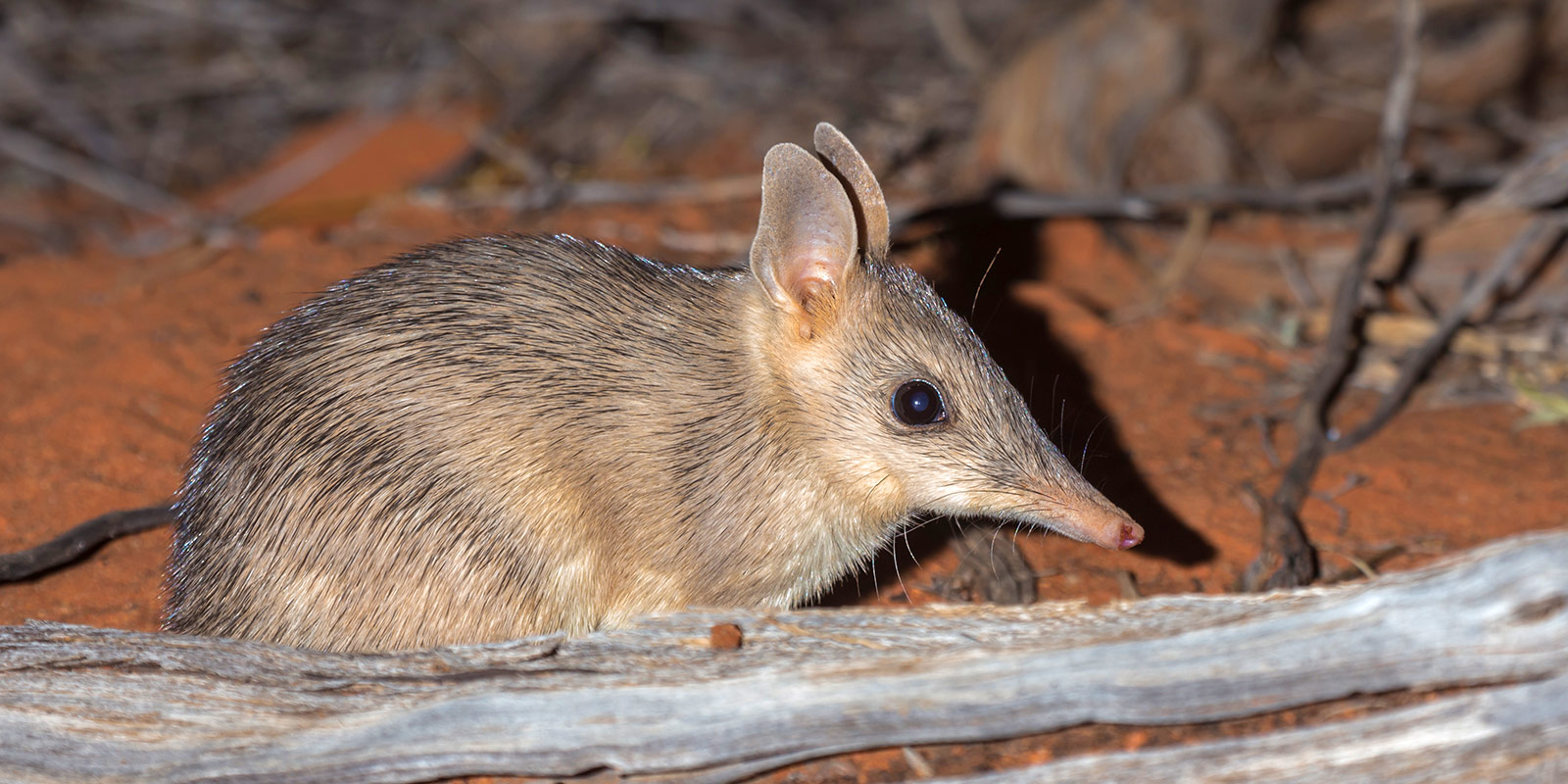Shark Bay Bandicoot
The nest-building Shark Bay bandicoot is dependent on our predator-proof fence for survival

In 2000, 12 Shark Bay bandicoots (Perameles bougainville) from Bernier Island in WA were released into a pen in our Main Enclosure. There are now an estimated 500 individuals in the Reserve. Initially, breeding was stimulated by providing water within a soft-release pen.
WHAT HAS ARID RECOVERY LEARNT?
We have a genetically strong population of Shark Bay bandicoots
In 2009, a supplementary release of five individuals from Faure Island in Western Australia was conducted to expand the genetic stock and increase the viability of the population. Mixing the two populations had the desired effect, with a recent study showing the genetic diversity of the current western barred bandicoots is now slightly greater than the founding population.
SPECIES PROFILE
Range and abundance: Recent taxonomic work has found that what was once considered one species (the western barred bandicoot), is in fact five different species that ranged across much of the arid and semi-arid zones in southern Australia. Sadly, all but one of these species is now extinct. The surviving Shark Bay bandicoot survived on Bernier and Dorre Islands in WA. When bandicoots were released at Arid Recovery they were understood to be the original species from the area. As it turns out, the original species is lost forever but the Shark Bay bandicoots have survived and thrived here for nearly two decades and are performing important ecosystem functions with their digging activity, hopefully having a similar positive impact as the original now extinct species. Shark Bay bandicoots have since been translocated from Arid Recovery to Wild Deserts in Sturt National Park, NSW.
Shelter:The Shark Bay bandicoot shelters in a nest during the day. It constructs its nest by digging a shallow hollow under a shrub and filling it with leaves and sticks. It is disguised from predators using an even cap of leaves. Some Shark Bay will use the same nest for a week, while others will move to a new nest each night.
Feeding: Although not as adept at digging as bilbies, the Shark Bay bandicoot uses its strong hind legs to dig below the ground to forage for insects, spiders and worms. It also eats seeds, roots, herbs and other smaller animals. It can use its good sense of smell to detect food up to 30cm underground.
Breeding: Shark Bay bandicoots only breed after heavy rainfall. They have an exceptionally short gestation period. Two or three joeys are born at a time. When a joey is first born, they’re about the size of a tic tac. The pouch is backward opening so that when digging the dirt is not thrown into the pouch. Young stay in the pouch for 45 – 60 days. After two weeks outside the pouch, the young bandicoot is independent of its mother.
Threats:The extinction of the western barred bandicoot species complex from the mainland has largely been due to predation by cats and foxes. Other factors include grazing by rabbits and changes in fire regimes. The Shark Bay bandicoot is now listed nationally as endangered, with less than 3000 left in the wild. Another threat is a variety of Papilloma wart virus. It was discovered on a captive bred Shark Bay bandicoot in 1999. In severe cases, the virus can cause blindness and compromised movement due to severe warts and lesions on the feet. The first bandicoots reintroduced to Arid Recovery spent time in quarantine before being released to ensure they were disease-free.